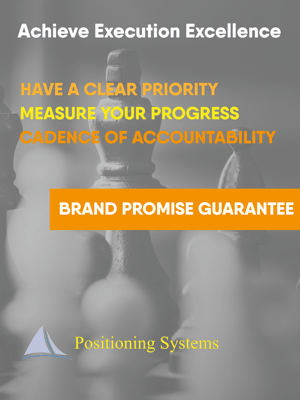.jpg?width=300&name=Great%20Workplaces%20Excel%20in%20Engagement%20(Gallup).jpg) Most employee engagement programs haven’t worked.
Most employee engagement programs haven’t worked.
Gallup’s recent numbers show while US employee engagement exceeds Global engagement (34% to 15%), employee engagement levels are still low. As we shared in Improve Employee Engagement to 91% - 10 Minutes by Friday there are creative ways to improve employee engagement and raise the bar of productivity in your business.
Why Most Employee Engagement Programs Haven’t Worked
In Employee Engagement: Maximizing Employee Potential Gallup provides 3 reasons Employee engagement programs have not worked.
- Leaders make engagement metrics far too complicated by focusing on predictors of their organization’s successes or failures — predictors that often are outside of managers’ control and typically don’t relate to meeting employees’ core psychological needs at work.
- They use a low bar “percent favorable” metric that inflates scores and creates blind spots, resulting in the appearance of high engagement without strong business outcomes.
- They overuse pulse surveys to get immediate feedback and rarely act on the results.
Gallup feels the greatest cause of engagement program failure is: Employee engagement is widely considered “an HR thing.” It is not owned by leaders, expected of managers or understood by front-line employees.
Just as our experience in hiring (Topgrading) found, unless the executive team, and specifically the CEO takes ownership for improving employee engagement, efforts to raise the bar fail.
Changing Demands in the Workplace.jpg?width=300&name=Changing%20Demands%20in%20the%20Workplace%20(Gallup%20Its%20the%20Manager).jpg)
In our previous blog, Good Job Vs. Lousy Job, we shared the shifting job environment, and how your organization, and specifically managers need to change to meet this dynamic.
Several of my customers recognize and have aggressively adjusted their goals and objectives for 2020 to address these shifting demands.
More than ever your organizations success depends on having excellent managers. It’s no longer managers, but coaches you need to occupy the management positions in our organization to elevate your people and meet the demands and growth expectations.
%2059%25-1.jpeg?width=300&name=Employees%20Who%20Dont%20Know%20What%20Org%20Stands%20For%20(Gallup)%2059%25-1.jpeg) This begins simply. Communicating what your organization stands for. 59% of employees fail to understand what their organization stands for.
This begins simply. Communicating what your organization stands for. 59% of employees fail to understand what their organization stands for.
Next step is to move your managers from boss’s to coaches.
As you can see from this graphic, Gallup’s data emphasizes the critical value of moving managers to coaches.
.jpg?width=1192&name=Boss%20to%20A%20Coach%20(Gallup%20Its%20the%20Manager).jpg) Gallup discovered a person’s manager is the primary factor in an employee’s engagement and, ultimately, their performance. This agrees with the ideas provided in Nine Lies about Work
Gallup discovered a person’s manager is the primary factor in an employee’s engagement and, ultimately, their performance. This agrees with the ideas provided in Nine Lies about Work
Managers account for 70% of the variance in team engagement. Managers ensure employees know what work needs to be done, support and advocate and explain how their work connects to organizational success.
Switch from Boss to Coach
Coaching is accomplished through ongoing coaching conversations. Five coaching conversations drive performance: include
- Role and relationship orientation,
- Quick connects,
- Check-ins,
- Developmental coaching and
- Progress reviews.
The frequency of these conversations matters.
.png?width=300&name=What%20is%20coaching%20to%20You%20(Boss%20vs%20Coach).png) Employees who receive daily feedback from their manager are three times more likely to be engaged than those who receive feedback once a year or less.
Employees who receive daily feedback from their manager are three times more likely to be engaged than those who receive feedback once a year or less.
Managers need a deep understanding of their employees’ talents, needs, preferences and dreams. Employees should set goals and discuss their future with your organization.
Coaching is a different mind-set from a boss. Managers/Coaches focus on the individual, continual growth and future potential.
Don’t just ask managers to coach.
As the Leader You must:
- redefine managers’ roles and expectations
- provide the tools, resources and development that managers need to meet those expectations
- create evaluation practices that help managers accurately measure performance, hold employees accountable and coach to the future
Applying Engagement to Every Stage: Questions to Ask
How do you apply employee engagement better in your organization? Gallup recommends you look at it globally to every stage in your employee flow:.jpg?width=1331&name=Employee%20Experience%20-%20Journey%20with%20your%20Organziation%20(Gallup).jpg)
- ATTRACT: Are we leading with communications about our mission to attract talent who finds our purpose motivating?
- HIRE: Are we hiring for fit to role so that people do what do they do best every day?
- ONBOARD: Do we engage new hires from day one and make onboarding a long-term process that establishes clear expectations and a positive manager relationship?
- ENGAGE: Do our managers and their teams have regular discussions about the engagement of their team members and how to create an engaging culture?
- PERFORM: Are discussions about engagement needs integrated with performance conversations?
- DEVELOP: Do managers infuse engagement topics into development discussions with their teams?
- DEPART: Does the organization recognize and celebrate the accomplishments of people when they leave?
To discuss helping your business improve overall performance and culture contact dwick@positioningsystems.com
 Growth demands Strategic Discipline.
Growth demands Strategic Discipline.
To build an enduring great organization, requires disciplined people, disciplined thought, disciplined action, to produce superior results, and make a distinctive impact in the world.
Discipline sustains momentum, over a long period of time, laying the foundations for lasting endurance.
A winning habit starts with 3 Strategic Disciplines: Priority, Metrics and Meeting Rhythms. Forecasting, accountability, individual, and team performance improve dramatically.
Meeting Rhythms achieve a disciplined focus on performance metrics to drive growth.
Let Positioning Systems help your business achieve these outcomes on the Four most Important Decisions your business faces:
|
DECISION |
RESULT/OUTCOME |
|
PEOPLE |
|
|
STRATEGY |
|
|
EXECUTION |
|
|
CASH |
|
Positioning Systems helps mid-sized ($5M - $250M) business Scale-UP. We align your business to focus on Your One Thing! Contact dwick@positioningsystems.com to Scale Up your business! Take our Four Decisions Needs Assessment to discover how your business measures against other Scaled Up companies. We’ll contact you.
NEXT BLOG – Your Words
In the role of a coach, our words powerfully impact others. The impact of Vince Lombardi’s few words to Willie Wood when he was struggling share how crucial our words can be to the people around us. That story and my own lesson of words next blog.






.jpeg?width=150&height=135&name=Hand%20with%20marker%20writing%20the%20question%20Whats%20Next_%20(1).jpeg)

